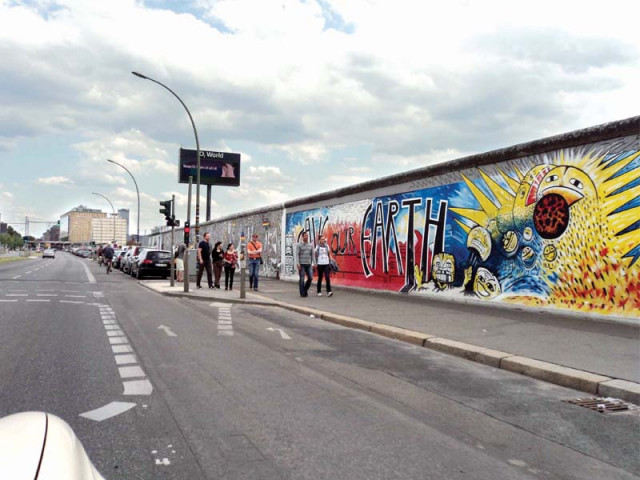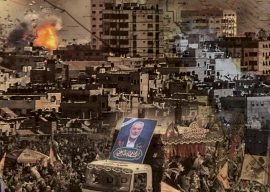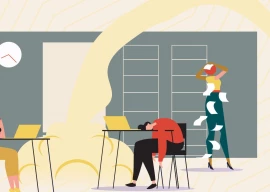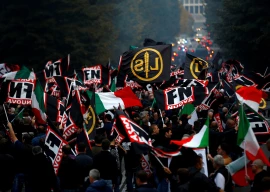
The first version of the wall remained blank; the bad quality of concrete that was used prevented anyone from defacing it as any graffiti on the wall was extremely hard to see. It remained bare until 1975, when it was replaced and fortified by the Grenzmauer 75 (Border Wall 75), the final and most sophisticated version of the Wall. Made up of prefabricated concrete segments lined side by side like huge Lego blocks, the perfection of the wall was the reason it became such a symbol of hope. The new wall was of better quality — East Germany had just created the largest canvas in the world.
Painting or writing on the wall was expressly forbidden and since the wall was built three metres beyond the official border, East German soldiers were allowed to arrest anyone who so much as stood near the wall. Despite the threat of arrest, the western side was soon covered with an assortment of art, graffiti, and messages of hope. The walls symbolised the differences between the east and the west. The bare walls of the east were in sharp contrast to the colourful and lively ones in the west — the former represented the repressed society of East Berlin, while the latter, the freedom and hope of West Berlin.
Twenty-two years later, one can still see traces of the wall in and around Berlin. The vestiges of the wall are there to remind us that freedom is precious and it must be protected. Right in front of the segments of the wall in Potsdam Square, a man in a military uniform provides novelty visa stamps of East Berlin to tourists. The stamps are a reminder of the time when going over to the other side of Berlin was not possible without special permission. The sight of the wall still seems to have an impact on Berliners, “I get emotional whenever I visit this little part of the wall,” says Paul Haunt, “at the time of its fall, I was just a little boy but I remember crossing it with my whole family. There were smiles all around as people crossed over to meet family and friends.”
Stephn Kohn, a taxi driver, lived in East Berlin before the fall. “There were times when my family had to spend days without food. But today we live with love and respect for each other,” he says, “I still remember the night of the fall, it was the night of our reunion.”
It’s not just Germans or Berliners who are touched by this monument. Fazle Rabbi Rahi, a Pakistani visitor to the wall, says, “The fall of the Berlin Wall was something natural; it is never possible to divide one nation into two parts. Even this remaining fragment creates suffocation in my mind. This was a wall of hatred and it is clear that hatred can never nourish anyone.”
After the fall of the Berlin Wall in 1989 the Eastern side of the wall was also painted by artists. Today, a few painted sections of the Eastern side of the wall still exist but the City of Berlin ensures that most of it remains grey.
Published in The Express Tribune, Sunday Magazine, February 5th, 2012.


















COMMENTS
Comments are moderated and generally will be posted if they are on-topic and not abusive.
For more information, please see our Comments FAQ